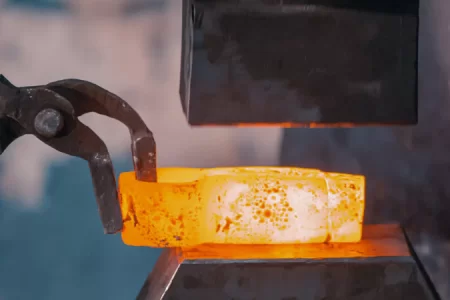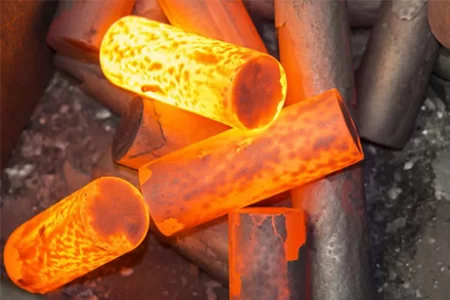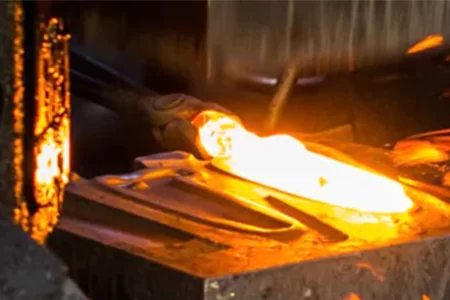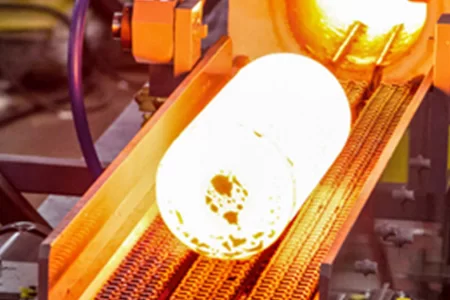HULK Metal will continuously update the dynamics of the metal products industry, to support your decision-making.

HULK Metal Forging News
Record HULK Metal’s Dynamics
Types of Jaw Wire Grip and Suitable Use Scenarios

Jaw Wire Grip is an important tool widely used in power engineering. It is mainly used to clamp, fix, or adjust transmission lines to ensure the smooth installation, maintenance, and overhaul of power lines. According to different usage scenarios and load requirements, Jaw Wire Grip has a variety of models to choose from. Each type of clamp is designed for a specific application environment and usage conditions to ensure sufficient grip and safety on various occasions. When choosing, users should consider the material, structural design, and required load capacity of the clamp according to the construction requirements to ensure construction safety and improve efficiency.
Models and suitable use scenarios of Jaw Wire Grip
As an important tool in power engineering, the function of the jaw wire grip is to clamp, tighten or adjust the transmission line to ensure the smooth installation, maintenance, and repair of the power line. According to different use scenarios and load requirements, there are various types of jaw wire grips, including aluminum alloy profile transmission line grips, insulated layer transmission line grips, steel hinged wire grips, ground wire grips, single-peach grips, double-peach grips, frog-type grips, and anti-twist galvanized steel wire rope grips. Each type of gripper is designed for specific application environments and usage conditions to ensure sufficient grip and safety on various occasions.
Aluminum alloy profile transmission line jaw wire grip
Main uses:
Aluminum alloy profile transmission line jaw wire grips are usually used to adjust the sag of overhead power lines and tighten transmission lines. In the process of erecting transmission lines, power lines usually need to adjust their tightness to ensure the safe operation of the line. Aluminum alloy profile transmission line clamps can play a key role in this process, helping construction workers to accurately adjust the tightness of the transmission line.
Features:
This jaw wire grip is made of high-toughness titanium-magnesium-aluminum alloy material, which is light and easy to carry. Especially in high-altitude operations, construction workers need to carry tools for complex operations, and the lightweight characteristics of aluminum alloy materials make construction more efficient and safe. In addition, the corrosion resistance of titanium-magnesium-aluminum alloy also provides a guarantee for the use of jaw wire grips in harsh environments.
Applicable objects:
Aluminum alloy profile transmission line jaw wire grips are suitable for the gripping of aluminum-stranded wires and steel-core aluminum-stranded wires. This type of transmission line is widely used in high-voltage transmission. The precise clamping ability of the jaw wire grip can ensure that the transmission line does not slip during the adjustment process.
Double-peach jaw wire grip
Main use:
The double-peach jaw wire grip is mainly used for the adjustment of the suspension line of the suspension tower and the tightening of the grounding line. Its flexibility enables it to be used in a variety of situations, not only limited to the adjustment of power lines but also includes the tightening of auxiliary lines such as grounding lines. The design structure of the double-peach wire gripper is simple but powerful and can meet the gripping needs of cables or wires of various diameters.
Features:
The double-peach jaw wire grip is characterized by its flexibility and ability to adapt to a variety of different working environments. Because its fastening mechanism can be flexibly adjusted, it can ensure a firm grip in different construction scenarios. In addition, the double-peach jaw wire gripper is usually made of high-quality carbon steel material and forged to ensure high strength and durability.
All-purpose jaw wire grip
Features:
The all-purpose jaw wire grip is made of high-quality carbon steel after forging, and the jaw wire grips are specially tempered to effectively increase its wear resistance and gripping power. The design focuses on safety. The jaws of the wire grip are equipped with a safety device to effectively prevent the steel hinge wire or other cables from slipping during operation. This safety feature greatly improves safety during construction, especially in high-altitude operations or harsh environments.
Scope of application:
The all-purpose jaw wire grip is suitable for gripping various steel-hinged wires, ground wires, insulated transmission lines, etc. due to its high-strength carbon steel structure and special anti-slip design. When erecting large cables or performing ground wire construction, the all-purpose wire gripper can ensure a firm grip and ensure that the construction is safe and smooth.
Steel-hinged jaw wire grip
Purpose and characteristics:
The steel-hinged jaw wire grip is specially designed for gripping and adjusting steel-hinged wires. This type of jaw wire grip is usually used to erect or maintain high-voltage transmission lines and other cables with large loads. The characteristic of the steel-hinged jaw wire grip is that its jaws are reinforced to ensure stable gripping force even under high load conditions. In addition, the jaws are usually treated with wear-resistant materials to ensure that their performance does not deteriorate during long-term use.
Applicable objects:
The steel-hinged jaw wire grip is suitable for heavy-loaded transmission lines such as steel-core aluminum stranded wire and high-strength steel wire. In high-voltage power transmission projects, this type of jaw wire grip is an indispensable tool. It can ensure that the cable will not slip during the tensioning process, thereby ensuring the smooth progress of the construction.
Ground jaw wire grip
Main use:
The ground jaw wire grip is specially used for clamping and adjusting the ground wire and is usually used in the ground wire layout and maintenance process of the transmission line. The ground wire is a key part of the transmission line system for lightning protection and protection, and it is very important to ensure its stable installation. The design of the ground jaw wire grip can meet this demand and ensure that the ground wire can be stably clamped even in complex environments.
Features:
The ground jaw wire grip is made of high-quality materials, with high strength and corrosion resistance, and is suitable for construction conditions exposed to the outdoor environment for a long time. Its structural design is usually compact, which is convenient for operation in a small space.
Single-peach jaw wire grip
Use and characteristics:
The single-peach jaw wire grip is a clamp used for small and medium-sized transmission lines and cables. It has strong adaptability and can be used in a variety of environments. The design of the single-pole jaw wire grip is relatively simple, compact, and easy to use, especially suitable for work scenarios that require frequent movement or adjustment.
Applicable objects:
The single-pole jaw wire grip is suitable for clamping transmission lines or cables with smaller diameters and is usually used for the laying or maintenance of medium and low-voltage transmission lines. Its lightweight design allows construction workers to operate quickly and efficiently.
Frog jaw wire grip
Main use: The frog clamp is often used in the process of erecting high-voltage transmission lines or other heavy-load cables. Its unique clamping design makes it particularly effective when handling large-diameter cables. The frog clamp adopts a double clamping mechanism, which can provide higher grip and safety, ensuring that the cable remains stable during construction.
Features:
The design of the frog clamp is inspired by its frog-like clamping structure, which makes it more stable when gripping thicker cables. In addition, the frog clamp is usually made of high-strength alloy steel and undergoes special surface treatment to ensure its durability and corrosion resistance in harsh environments.
Anti-twist galvanized jaw wire grip
Main uses:
Anti-twist galvanized jaw wire grips are used in work scenarios where wire ropes need to be prevented from winding and knotting, especially in high-altitude operations or complex environments. The anti-twist design can ensure that the wire rope remains in a straight state during tensioning or adjustment, avoiding the increased construction difficulty caused by wind.
Features:
This type of jaw wire grip is usually made of galvanized alloy steel, which has strong corrosion resistance and durability and is particularly suitable for use in high humidity or highly corrosive environments. In addition, the anti-twist design can effectively increase the service life of the wire rope and reduce the risk of accidents during construction.
Material and manufacturing process of jaw wire grips
HULK Metal's jaw wire grips are mainly made of alloy steel. Alloy steel materials have excellent strength and wear resistance, and can provide reliable performance in high-intensity operations. In addition, the toughness and ductility of alloy steel make the wire grip less likely to break or damage when clamping cables or wires, further improving the safety of construction.
The manufacturing process of the wire grip usually includes steps such as forging, quenching and tempering, and surface treatment. The forging process ensures that the wire grip has a compact structure, no pores, and cracks; the quenching and tempering treatment can improve the hardness and wear resistance of the material; the surface treatment enhances the corrosion resistance of the wire grip, ensuring that it can maintain good working condition even in harsh environments.
Wire grips (also known as wire clamps or cable clamps) are a tool widely used in industries such as power, communications, and construction. Its main function is to clamp and fix the wire grip or cable through the bite force of the gears to ensure stability and safety during the construction process. According to actual application requirements, wire clamps can be divided into different types such as single-sided teeth, double-sided teeth, and three-sided teeth. The core of its design lies in the number and distribution of gears, which directly affects the load capacity and clamping effect of the wire clamp.
Single-sided teeth
Single-sided tooth jaw wire grips are usually used in light load situations, and their structure is relatively simple. The advantage of the single-sided tooth design is that it is easy to operate and is suitable for some application scenarios that do not require high clamping force. Although the bite force of the single-sided tooth is weak, it has flexible operation performance and can quickly clamp and release the wire grip or cable at the construction site. Therefore, it is often used in some small projects or application scenarios where the cable position needs to be adjusted frequently. Nevertheless, the single-sided tooth wire grip is not suitable for heavy loads or environments that require high fixation.
Double-sided teeth
The double-sided tooth wire grip has stronger bite force and stability than the single-sided tooth wire grip. The double-sided tooth design enables the wire grip to clamp the wire rope or cable from two directions at the same time, providing greater friction. This design is particularly suitable for medium-load conditions and is widely used in engineering projects that require a certain clamping force but are not too heavy. The double-sided tooth wire grip can ensure that the wire rope will not slip when subjected to large loads, ensuring the safety of construction workers. It is a common and reliable tool choice in fields such as power construction and bridge construction.
Three-sided teeth
For larger tonnage loads, the three-sided tooth wire grip is the best choice. The three-sided tooth wire grip has three sets of gears, which can provide more uniform and powerful bite force. This allows it to disperse greater tension when clamping the wire rope or cable, thereby reducing the pressure on a single-tooth surface and extending the service life of the wire gripper. Three-sided tooth wire grips are often used in heavy engineering projects, such as cable laying in high-rise buildings, hoisting of large equipment, and construction of large bridges. It can cope with high load requirements and provide maximum safety.
Relationship between tonnage and number of gears
The larger the tonnage, the more gears the wire grip has. This is because, under heavy load conditions, the bite force of a single gear is not enough to provide sufficient fixing force. Increasing the number of gears can effectively increase friction and clamping force to ensure that the wire rope or cable does not move under heavy load. As the tonnage increases, the number of gears will increase accordingly to cope with higher load requirements. For example, when handling loads of several tons or even more than ten tons, a three-sided or multi-sided tooth wire grip can provide additional safety.
Considerations for selecting a wire grip
When purchasing a wire grip, it is necessary to comprehensively consider the required load capacity, working environment, and construction requirements. For light loads, a single-sided toothed wire gripper is sufficient; for medium loads, a double-sided toothed wire gripper can be selected, while for heavy loads, a wire grip with three-sided teeth or more gears should be preferred. In addition, the manufacturing material, surface treatment process, and ease of operation of the wire grip are also important factors affecting its performance and service life. High-quality wire grips are usually made of high-strength alloy steel materials and undergo strict surface anti-corrosion treatment. They can be used for a long time in harsh outdoor environments without rusting or damage.
As an important tool for fixing wire ropes and cables, the design of the wire grip directly affects the safety and efficiency of construction. It is crucial to choose the right type and number of gears according to different construction requirements. Whether it is light, medium, or heavy loads, a reasonable choice can ensure that the wire gripper provides reliable fixing force while extending its service life and improving the safety and economic benefits of construction.
Article Navigation
Article Navigation
Industries
Forging Factory






